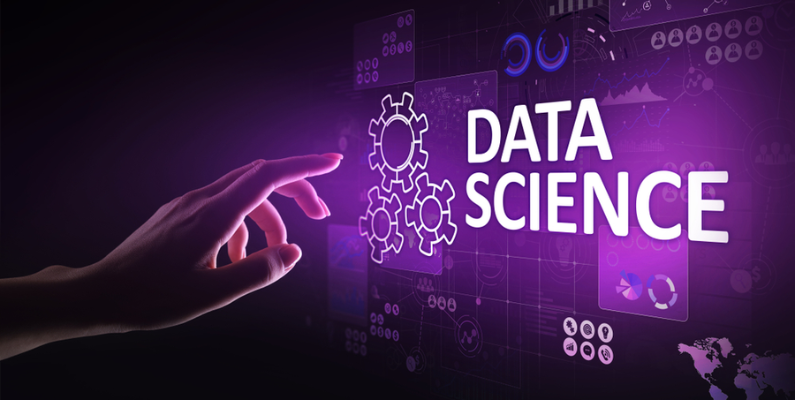
Data Science involves deriving insights from data using advanced analytics and machine learning techniques. The benefits include enhanced decision-making, increased efficiency, and a stronger competitive edge. With increasing demand across industries, Data Science involves collecting, cleaning, analyzing, and modeling data to inform strategies and predictions. In this blog, we explore how does Data Science work. Join the Data Science Course in Gurgaon at FITA Academy, which offers comprehensive knowledge and placement support.
Understanding Data Science
Data Science integrates diverse techniques, approaches, and technologies to uncover insights and knowledge from both structured and unstructured data. It merges techniques from statistics, computer science, and domain expertise to solve complex problems and inform decision-making. The core of Data Science lies in its ability to harness data for meaningful interpretations and predictions.
Data Collection
The first step in Data Science is to collect data from various sources. This could include internal databases, public datasets, or real-time data streams from sensors or social media. The goal is to collect relevant data that can address specific business questions or research objectives. Data collection methods might involve web scraping, APIs, or direct data entry, depending on the nature and volume of data needed.
Data Cleaning and Preprocessing
Once data is collected, it often requires cleaning and preprocessing to ensure quality and consistency. This phase includes addressing missing values, eliminating duplicates, and fixing errors. Preprocessing might also include normalizing data, transforming variables, and encoding categorical data into numerical formats. Effective data cleaning is essential because it directly influences the accuracy and reliability of the analyses that follow. Enrolling in a Data Science Course in Kolkata will enhance your understanding of the framework.
Exploratory Data Analysis (EDA)
Exploratory Data Analysis (EDA) is the process of analyzing data sets to summarize their main characteristics, often with visual methods. During EDA, data scientists use statistical graphics, plots, and information tables to understand data distributions, identify patterns, and detect anomalies. This stage aids in developing hypotheses and directing subsequent data investigation and modeling efforts.
Feature Engineering
Feature engineering involves creating new variables or modifying existing ones to improve the performance of machine learning models. This step is essential because the quality of features can significantly influence model outcomes. Techniques include creating interaction terms, polynomial features, or aggregating data. Effective feature engineering helps in capturing underlying patterns and improving predictive accuracy.
Model Selection and Training
Model selection is a critical phase where appropriate machine learning algorithms are chosen based on the problem type and data characteristics. Data scientists might use regression models for predicting continuous outcomes, classification models for categorical outcomes, or clustering techniques for grouping similar data points. Once a model is selected, it is trained using historical data to learn patterns and relationships. Training involves adjusting model parameters to minimize prediction errors and improve accuracy.
Model Evaluation
After training, models are evaluated to assess their performance. Common evaluation metrics include accuracy, precision, recall, F1 score, and area under the ROC curve for classification tasks or mean squared error and R-squared for regression tasks. Model evaluation reveals how effectively a model performs on new, unseen data and if it meets the expected performance standards.
Hyperparameter Tuning
Hyperparameter tuning is the process of optimizing model parameters that are not learned during training but are set before the training process begins. Methods like grid search, random search, and Bayesian optimization are employed to identify the optimal set of hyperparameters. Proper tuning helps in enhancing model performance and ensuring that it performs optimally across different data sets. Explore the Data Science Course in Ahmedabad, which gives a better understanding of Data Science concepts.
Deployment and Monitoring
Once a model is trained and validated, it is deployed into production environments where it can make predictions on new data. Deployment involves integrating the model with existing systems and applications to automate decision-making processes. Ongoing monitoring is crucial to keep the model performing well over time. This includes tracking model predictions, checking for data drift, and retraining the model as needed to adapt to changing data patterns.
Data Science in Practice
Data Science applications span various domains, from business analytics to healthcare, finance, and beyond. For instance, in business, Data Science can optimize marketing strategies, improve customer segmentation, and enhance supply chain management. In healthcare, it aids in predictive modeling for patient outcomes, drug discovery, and personalized treatment plans. Each application leverages Data Science methods to derive actionable insights and drive informed decision-making.
Challenges and Future Directions
Despite its power, Data Science faces several challenges, including data privacy concerns, ethical considerations, and the need for high-quality data. With the progression of technology, Data Science is continually advancing through breakthroughs in artificial intelligence, machine learning, and big data analytics. The future of Data Science promises even more sophisticated tools and techniques, driving further breakthroughs across various fields.
Data Science is a multi-step method involving data collection, cleaning, analysis, and modeling to extract actionable insights. Each step requires a combination of technical skills and domain knowledge to interpret data and make informed decisions effectively. Enrol in the Data Science Course in Delhi, where you will receive knowledge of Data Science tools and frameworks.
Also Check: Data Science Interview Questions and Answers